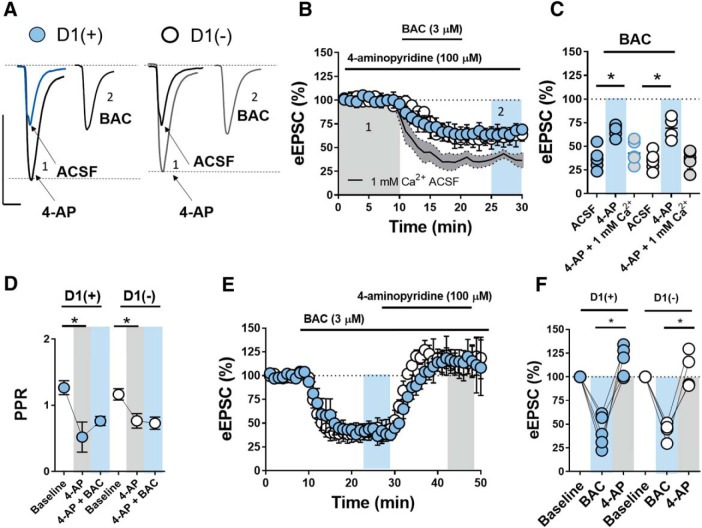Figure 5.
Elevating presynaptic Ca2+ influx abrogates downstream GABABR effector function. A, 1: Representative traces showing that 4-AP application increases eEPSC amplitude and decay time at glutamatergic synapses onto D1(+) and D1(−) MSNs. 2: eEPSC amplitude at D1(+) and D1(−) MSN synapses in the presence of BAC. Scale bar: 200 pA/20 ms. B, Prior bath application of 4-AP blunts the BAC-induced decrease in eEPSC amplitude at D1(+) and D1(−) MSNs). Low Ca2+ (1 mm) ACSF returns BAC-induced decrease in eEPSC amplitude to control conditions (pooled D1(+) and D1(−) MSNs, line with shaded gray area within SEM). C, Graph of average eEPSC amplitude in the presence of BAC with 4-AP, 4-AP + low Ca2+ ACSF, and ACSF-only control conditions (t = 25–30 min). D, 4-AP application alone decreases PPR and negates the increase in PPR elicited by BAC. E, Time course summary showing that 4-AP application reverses eEPSC amplitude in the presence of BAC at D1(+) and D1(−) MSNs. F, Graph of average eEPSC amplitude following 4-AP reversal in the presence of BAC (blue, t = 20–25 min) and 4-AP + BAC (gray, t = 45–50) for D1(+) and D1(−) MSNs. Error bars indicate SEM. *p < 0.05.

